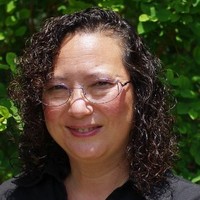Table of Contents
It’s almost summer, and flowers are blooming. Look at a field of sunflowers. What do you notice?
Sunflowers are a well-known plant that tracks the Sun during the day. If you show students a picture of sunflowers in the morning and the afternoon, do you think students would notice that the flower heads are facing a different direction? What a curious and interesting phenomenon! A few plant species, including sunflowers and poppies, display this natural sun-tracking behavior called heliotropism. This phenomenon is caused by the plant’s internal clock that uses hormones to change the cell growth rates along the sides of the stem.
Background
The States of Texas, Minnesota, and Pennsylvania have recently adopted new science curriculum standards that focus on natural phenomena. Although students have studied the natural world for decades, our language in standards has changed to focus on observable events (phenomena) that can drive student inquiry and curiosity.
For example, in Texas, the new science standards use phenomena to show students science in their own neighborhood and world. Our teachers use science knowledge to explain and predict phenomena and science concepts. The goal is for students to make sense of their local and community phenomena; along with worldwide phenomena such as butterfly migration, waterspouts, and bioluminescent algae beach blooms.
There have been many recent articles and resources that describe effective phenomena-based learning. It is important to describe this shift in thinking – especially in regards to behaviors in the classroom. Below is a chart of some typical qualities of effective phenomena strategies and examples of databases that offer phenomena resources.
|
Effective Phenomena Qualities |
Examples of Resources (Databases) |
|
Foster students’ sense of wonder and curiosity; engages students |
|
|
Are relevant to students’ local community or worldwide happenings |
|
|
Are observable and interesting; provides shared experiences and equity among students |
|
|
Can be investigated and explained |
|
|
Can be a hands-on experience, demonstration, video, picture, data set, discrepant event, or engineering problem |
In the past, teachers would use a hook, discrepant event, or anticipatory set to initially engage students in a lesson. Just a small tweak in approach can turn those simple engagements into phenomena for a more comprehensive strategy to bring students into active instruction. Based on the 5E method of instructional lesson design, teachers should strive to “Engage” students by using natural phenomena; allowing them to figure out something or feel a sense of wonder or curiosity about what they see, touch, or experience in the classroom or field setting.
Texas has also expanded its science process skills to be more aligned with national efforts. The Science and Engineering Practices (SEPs) are a set of 8 skills that students will encounter throughout the science curriculum. Besides students using science practices to collect evidence and construct explanations, students will also be using engineering practices to design solutions to solve problems. This widening of the practices will provide students a more robust and relevant set of classroom and field experiences.
Now is the Time
District and campus personnel are now convening to revise or create a new science curriculum program for the upcoming school year. In Texas, we have new science instructional materials that were adopted. Now is the time to look at the entire science program and create a set of resources that will best serve students and teachers. Why have an adequate science program when your students could have an exemplary science program that is augmented with a variety of classroom and field experiences for students?
Embracing phenomena in the curriculum, along with meaningful activities, will benefit student learning and achievement. We have an opportunity to change and improve the science program by shifting our practices, including phenomena, and using a variety of content sources. Here is a number of resources I’ve found that support the introduction of phenomena-based learning in classrooms today:
|
Examples of Curriculum Options/Sources |
Description and Benefit |
|
Discovery Education Experience (DEX) |
All Texas Education Service Centers (ESCs) offer a supplemental program called DEX. Students are engaged with real-world content and multi-modal instruction, teaching tools, and cross-curricular strategies. |
|
Howard Hughes Medical Institute BioInteractive |
This program offers a variety of teaching resources on a wide range of topics in biology. Real science stories, free classroom resources, and professional development are offered (grades 9-16). |
|
Mystery Science |
A popular elementary science program that consists of science “open and go” lessons and 5- minute mini-lessons that include videos, discussions, and extensions. All lessons are standards-aligned and help students stay curious. |
|
Project WILD/Project Learning Tree/Project WET |
Project WILD, Project Learning Tree, and Project WET offer hands-on and inquiry-based lessons on terrestrial and aquatic ecosystems. Workshops for educators include collections of activities created for various levels from Pre-K-12th grade. |
|
Vernier Science Education |
Vernier offers data-collection technology for the classroom and field that includes durable sensors and versatile software. This popular program supports active and hands-on experiments. |
Phenomena occur in the student’s neighborhood, community — and in the classroom. Both the classroom and outdoor/field settings should be part of a student’s connection to the real world. Let us not forget that phenomena can easily connect science to mathematics, language arts, social studies, fine arts, and physical education. Having an integrated approach to using phenomena can have a far-reaching impact on student learning and retention.
Summary
District and campus curriculum developers have a unique opportunity to create a new student- centered and phenomena-based science program this summer. Principals should allow teachers sufficient time to plan and develop meaningful lessons using a variety of resources. A curriculum is more than a textbook. Also remember the value of strengthening the curriculum by embedding and using the Science and Engineering Processes (SEPs) in each unit of study. By clearly providing inquiry-based lessons that use phenomena, teachers will be able to instill a sense of wonder, curiosity, and appreciation for the natural world.
Subscribe to edCircuit to stay up to date on all of our shows, podcasts, news, and thought leadership articles.




